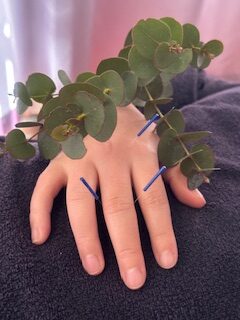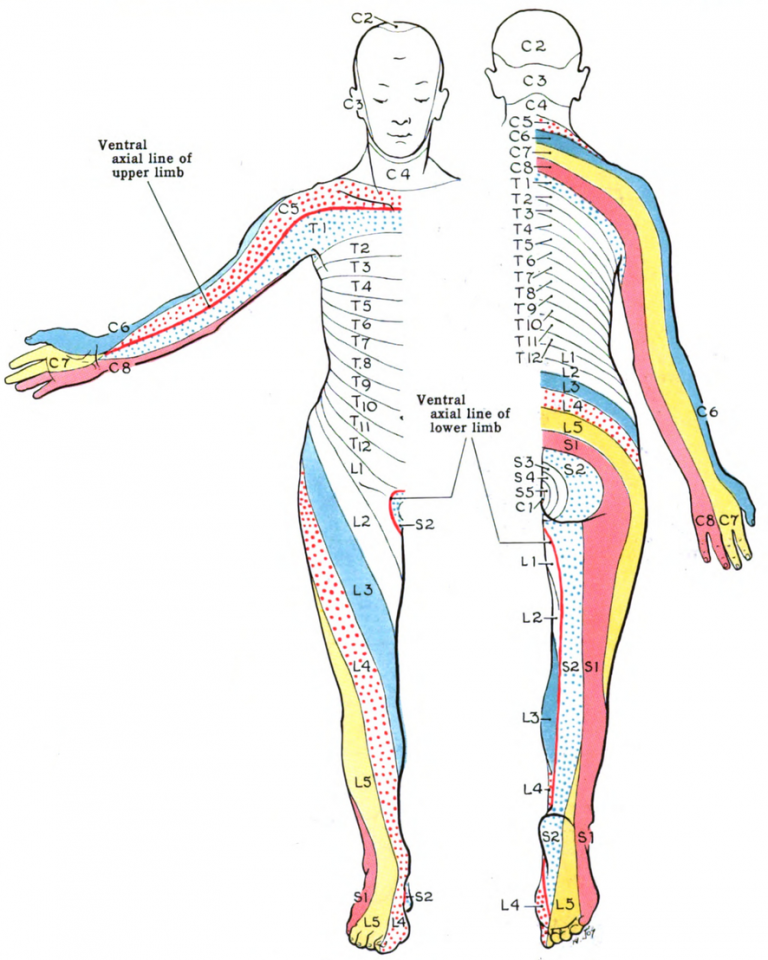頚椎ヘルニア 指のしびれ
#cervical herniation #cervical hernia
頚椎、首の骨は7個の骨と椎間板(骨の間に存在するクッション)が交互に組み合わさっています。脊髄はこの骨の真ん中の脊柱管の中を通っています。骨と骨の間の小さな穴(椎間孔)からは神経根が出てきます。頚椎の神経根は左右8対あり、それぞれ肩、腕、指などに到達し、頚椎の1番~7番の番号によって支配している部位が異なります。
椎間板ヘルニアとは、クッションである椎間板が過剰な運動、外傷、加齢などに伴う変性により壊れて後方に飛び出し、脊髄や神経根を直接圧迫したり、脊髄の血行障害を引き起こします。これらにより、しびれや痛み、運動障害などの神経症状が出現します。壊れた頚椎の番号によって痛みの部位がことなります。鍼灸治療としては、首の頚椎が後方にずれて飛び出してしまった部分の、筋や神経の緊張を緩和しやコリをほぐして、症状の改善をしています。今回は指の動きが悪くなり、鍼を刺して神経と筋を刺激して、指の可動域や指に力が入らない事に対して、症状の改善をいたしました
The cervical spine, or neck bone, consists of seven bones and intervertebral discs (cushions that exist between the bones) that alternate with each other. The spinal cord runs through the spinal canal in the middle of these bones. Nerve roots exit through small holes (intervertebral foramina) between the bones. There are eight pairs of nerve roots on each side of the cervical spine, each reaching the shoulder, arm, and fingers, and innervating different areas depending on the number of cervical vertebrae (1 to 7).
In a herniated disc, the cushioning intervertebral disc breaks down and protrudes backward due to degeneration associated with excessive motion, trauma, or aging, causing direct compression of the spinal cord and nerve roots and impaired blood circulation to the spinal cord. These cause the appearance of neurological symptoms such as numbness, pain, and movement disorders. The location of the pain varies depending on the number of the broken cervical vertebrae. Acupuncture and moxibustion treatment is used to relieve muscle and nerve tension and stiffness in the area where the cervical vertebrae of the neck have shifted backward and popped out, thereby improving symptoms. In this case, the patient had difficulty in moving his fingers, and acupuncture was used to stimulate the nerves and muscles to improve the range of motion of the fingers and the lack of strength in the fingers.

#頚椎ヘルニア #頚椎症 #cervical herniation #cervicalspondylosis



